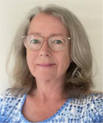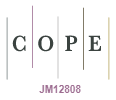Development of a 3D continental chronostratigraphic framework for energy, minerals and groundwater integrated assessments
Nadege Rollet A * , John Vizy A , Catherine Norton B and Carey Hannaford CA
B
C

Nadege Rollet, a Senior Geoscientist at Geoscience Australia with over 20 years of experience and an MSc and PhD from the University of Paris, has worked on petroleum, CO2 storage, seepage and groundwater studies. She now leads the development of a 3D national geological and hydrogeological framework. |

John Vizy, a 3D Geological Modeller and Data Analyst at Geoscience Australia, specialises in GIS mapping, geological modelling, and data integration. Previously at Frogtech Geoscience, he contributed to SEEBASE GIS products. He now develops national models to advance geological and hydrogeological understanding. |

Catherine Norton, a Senior Geoscientist with over 30 years of experience in petroleum, now consults with Geoscience Australia. She holds an MSc in Petroleum Geology and Geophysics from the University of Adelaide. |

Carey Hannaford, a Palynologist at MGPalaeo with over 20 years of experience in the oil, gas and minerals industry, specialises in biostratigraphy, sequence stratigraphy and petroleum exploration. |
Abstract
Understanding the chronostratigraphy of geological units is crucial for the transition to net zero by providing a 4D framework (three-dimensions through geological time) to assess potential energy and mineral resources, groundwater systems and storage sites for carbon dioxide and hydrogen. Integrating geological and hydrogeological data into a unified national 3D framework enhances decision-making across government, industry and communities for sustainable resource management, supports environmental approvals and cross-jurisdictional collaboration. Geoscience Australia’s former Exploring for the Future program and current Resourcing Australia’s Prosperity Initiative have advanced 3D conceptualisation of Australia’s sedimentary basins and groundwater systems, standardising stratigraphy and terminology across basins and jurisdictional borders. This enabled consistent 3D geological models revealing potential connections between geological units, reservoirs and aquifers. The integration of airborne electromagnetic and seismic data, with drillhole stratigraphy within a consistent national 3D chronostratigraphic framework underpins depth estimates for the nationwide Estimates of Geological and Geophysical Surfaces database. Collaboration with the jurisdictions harmonised 3D geology, focussing initially on updating aquifer boundaries in a groundwater context. The overarching goal is to improve national geological and groundwater datasets to support integrated management of energy, minerals, and groundwater resources. A key achievement is the national-scale 3D chronostratigraphic surface modelling, based on the Australian Borehole Stratigraphic Units Compilation, consolidating data from 53 sources and 171,396 drillholes. Ongoing refinement of subsurface geology is fundamental for resource potential mapping, multi-commodity assessments, and 3D visualisation, supporting the global energy transition, climate resilience, and water security for communities, industries and the environment.
Keywords: 3D geological models, airborne electromagnetic data, Australia’s groundwater systems, borehole stratigraphy, chronostratigraphy, national consistent framework, potential for critical minerals and strategic materials and geological storage of hydrogen and carbon dioxide, seismic reflection data, subsurface geological mapping.
 Nadege Rollet, a Senior Geoscientist at Geoscience Australia with over 20 years of experience and an MSc and PhD from the University of Paris, has worked on petroleum, CO2 storage, seepage and groundwater studies. She now leads the development of a 3D national geological and hydrogeological framework. |
 John Vizy, a 3D Geological Modeller and Data Analyst at Geoscience Australia, specialises in GIS mapping, geological modelling, and data integration. Previously at Frogtech Geoscience, he contributed to SEEBASE GIS products. He now develops national models to advance geological and hydrogeological understanding. |
 Catherine Norton, a Senior Geoscientist with over 30 years of experience in petroleum, now consults with Geoscience Australia. She holds an MSc in Petroleum Geology and Geophysics from the University of Adelaide. |
 Carey Hannaford, a Palynologist at MGPalaeo with over 20 years of experience in the oil, gas and minerals industry, specialises in biostratigraphy, sequence stratigraphy and petroleum exploration. |


